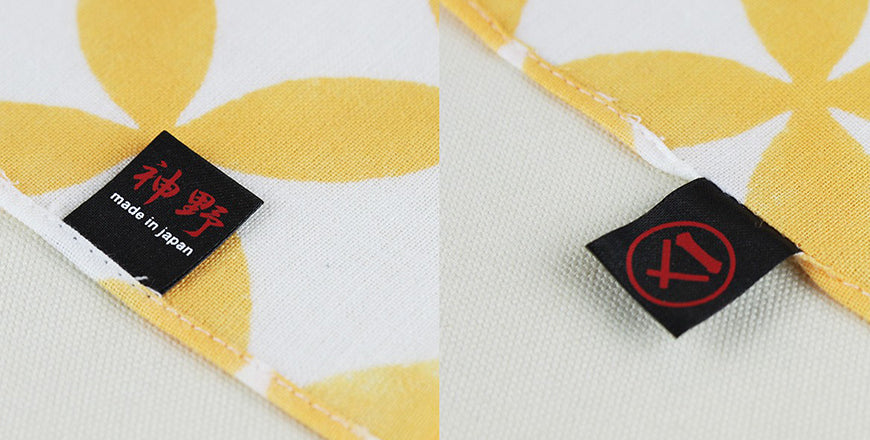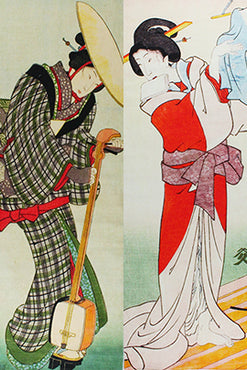Explain in detail various ways to use tenugui
Posted on Monday, March 15 2021 11:06:14 AM in news by 友和春田
Founded in the 32nd year of the Meiji era. I have been making tenugui for 120 years.
This is one point advice about tenugui that the 5th generation of a long-established tenugui wholesaler talks about!
Today, I would like to explain in detail how to use tenugui.
Yesterday, I talked about how useful it is for disaster prevention, but the good thing about this tenugui is that it can be used in a variety of ways, not just for disaster prevention.
So, today I would like to explain this area in a little more detail.
First of all, the characteristic of tenugui is that they are made of 100% cotton. And it is a plain weave fabric with a width of about 33cm and a length of about 90cm.
The shorter edge of the dough is generally left uncut.
When you take it overseas, you may think that it is a semi-finished product with the edges of the fabric not sewn, but considering the origin of the tenugui, it is an uncut product. After all, tenugui were very popular in the Edo period.
At that time, I used to wear kimono and clogs and straw sandals.
When I was walking and my clogs broke, I used to tear the towel and make it into a string to fix the clogs. Even when I was injured, I used to tear the towel and use it like a bandage.
Tenugui that have not been sewn on the edges of the fabric will be cut to the same width if you make a slight cut and tear it.
It is said that it is left uncut because it was used in this way, but it may be because there was no technique to sew it properly.
And since the towel itself is thin, it dries quickly if you squeeze it and dry it. It dries quickly and is hygienic compared to towels.
As for modern usage, I think the best way to use it is to use a towel as a handkerchief in the same way as it has been used since the Edo period.
Most handkerchiefs are about 43cm square, and even bandanas are about 53cm square.
The tenugui is 90cm long, so you can wipe it firmly even if you wipe your hands. If you fold the towel and put it in your pocket, it will fit in the right size. I recommend this dyed washcloth.
There are two types of tenugui, one is a main dyed tenugui and the other is a printed tenugui. However, the tenugui made by the main dyeing has better water absorption than the printed one and is the best handkerchief. It feels good to use because it gets softer and softer as you use it.
The way to distinguish between the main dyed tenugui and the printed tenugui is that the dye passes through to the back and the back is not white. Around this time, there are also double-sided printed tenugui that resemble this dyed tenugui, so please ask the shop to purchase them.
The second way to use tenugui is to use it for disaster prevention.
I explained it in detail the other day, so I will talk about it briefly, but in the summer you can wrap it around your head to prevent heat stroke and heat stroke, and in the winter you can wrap it instead of a muffler if it is cold.
You can tear the washcloth into a bandage or hang your arm as a sling. Considering the function of the towel, it is easy to use for disaster prevention. The third way to use it is to wrap various things.
You may bring wine or sake as a souvenir. It's a good idea to put wine in a bag or paper bag and bring it with you, but if you wrap it in a towel, you can bring ordinary sake in a fashionable way, so I use a towel.
Another way to wrap it is to wrap a PET bottle with a towel. In cold PET bottles in the summer, water droplets will stick around the bottle and make it sticky. By wrapping this in a towel, you can carry it without any unpleasant thoughts. Tenugui have good water absorption and wicking properties, so they dry out as you wrap them and carry them around.
You can also wrap your lunch box. You can say that you wrap it in a bandana, but it is also recommended that you use a towel to wrap the lunch box and bring it with you. It has good water absorption, so even if the juice comes out, the towel will absorb it. If you lay it under your lunch box and eat it, you can wash it immediately even if it gets dirty.
Most of the time, the tissue is left in the box at home, but you can also use a washcloth to make a cover for the tissue box.
Instead of sewing, you can easily make a cover by simply wrapping it and tying a washcloth.
You can also make a book cover.
Please see this page for how to make these.
https://shop.e-kanno.com/pages/how-to-wrap-with-tenugui
The fourth way to use it is to put it on your head to avoid getting stuffy. As with Kendo towels, when riding a motorcycle, if you wear a helmet without wearing anything, you will get stuffy and sweat. Summer is hard. In such a case, wrap a towel around your head and then wear a helmet to prevent sweat from flowing to your forehead. The washcloth absorbs sweat and is comfortable. It is hygienic because it can be washed immediately.
Fifth usage. It is a method of using a towel at home.
You can use it as an interior by putting a towel in your frame.
Frame it or use it as a tapestry like a picture.
In paintings, it is troublesome to change when you get tired and it is difficult to store it, but with a towel, it is easy to change the pattern and you can use it as a handkerchief if you wash it. Tenugui also have seasonal designs like paintings. For example, there are various printed towels such as cherry blossoms in spring, watermelons and fireworks in summer, colored leaves in autumn, and snowmen in winter. You can feel the season by putting this in the frame and decorating it. A tapestry is a decoration that attaches a shaft to the top and bottom and hangs it from above.
It is popular because it can be displayed more easily than the forehead.
Most of the towels sold in the frame are printed, but if you also use the traditional Japanese pattern dyed towels in the frame, you will feel the atmosphere. The wrinkles peculiar to this dyeing bring out the warmth. Traditional Japanese patterns are all meaningful in the pattern itself. For example, there is a pattern called hemp pattern.
Hemp grows quickly. From this, this pattern was used for birth clothes in the old days in the sense that it should grow up quickly with a pattern that wishes for the growth of children. I would like to put a linen-patterned hand-dyed towel in the frame to celebrate the birth. There is also a pattern called Qinghai wave. The pattern of the waves that you often see is a repeating pattern. This meaning is an auspicious pattern with the wish that the calm state will continue forever in the future.
Great for gifts!
I also use it for festivals.
Only genuine dyed towels are used for Japanese festivals.
We also make tenugui with a pattern on the whole and Koikuchi shirts using this tenugui. Yukata was originally made from tenugui cloth, so we will make yukata using yukata cloth (Tokuoka) cloth.
Tenugui are indispensable for festivals. Besides this, it is used a lot.

In practical terms, there are kendo towels and naginata towels. It seems that it is often used in martial arts as a souvenir of promotion or as a souvenir of the tournament.
There are also inquiries from Aikido and Karatedo Kyudo, so it seems to be compatible with martial arts. In this way, it is a tenugui that can be used for various purposes.

First of all, I think it's best to try it because it's used as a handkerchief. Familiarize yourself with the tenugui.









